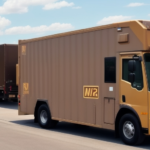Comparing the Best Rates for Shipping Boxes: FedEx vs UPS vs USPS
Choosing the right shipping carrier is crucial for businesses and individuals alike. With numerous options available, selecting between FedEx, UPS, and USPS can be challenging. This comprehensive guide delves into the pros and cons of each carrier, factors affecting shipping costs, and offers in-depth analysis to help you make an informed decision.
The Pros and Cons of FedEx Shipping Rates
FedEx is renowned for its fast and reliable shipping services. While their rates may be higher compared to other carriers, FedEx offers a variety of options for both domestic and international shipments. One major advantage is their flexible delivery options, including overnight and two-day delivery services. Additionally, FedEx is praised for its excellent customer service, with knowledgeable representatives available to assist with any inquiries.
- Pros:
- Fast and reliable shipping
- Flexible delivery options
- Excellent customer service
- Comprehensive international services
- Cons:
- Higher rates, especially for larger or heavier packages
- May not be cost-effective for small businesses or low-volume shipping
- Premium costs for expedited services
- Past criticisms regarding employee treatment and environmental impact
According to the Forbes Business Council, selecting a carrier like FedEx is ideal for businesses prioritizing speed and reliability, despite the higher costs.
UPS Shipping Costs: What You Need to Know
UPS offers a broad range of services for both domestic and international shipments. One significant advantage is their affordable rates, particularly beneficial for small businesses and individuals who do not require high-volume shipping. UPS also provides flexible delivery options, including weekend and evening deliveries, enhancing convenience for customers.
- Pros:
- Competitive and affordable rates
- Flexible delivery schedules
- Robust international shipping options
- Commitment to sustainability with initiatives like alternative fuel vehicles
- Cons:
- Not the best choice for extremely time-sensitive shipments
- Customer service can be inconsistent
- Potential issues with package delays or losses
UPS has made significant strides in sustainability, reducing their carbon footprint through investments in alternative fuel vehicles and efficient routing systems. This commitment not only benefits the environment but also appeals to eco-conscious customers.
USPS Shipping Prices: A Comprehensive Guide
The United States Postal Service (USPS) is a favored choice for many due to its affordable rates and flexible delivery options. USPS offers a diverse range of services, including Priority Mail and First-Class Mail for domestic shipments, alongside various international shipping options.
- Pros:
- Cost-effective rates for smaller packages
- Extensive network of post offices and mailboxes
- Free shipping supplies, including boxes and envelopes
- Flat-rate shipping options for heavier items
- Cons:
- Slower delivery times compared to FedEx and UPS
- Potential for lost or delayed packages
- Higher rates for larger or heavier packages
Despite some drawbacks, USPS remains popular due to its extensive service options and affordability, especially for individuals and small businesses.
Shipping Box Rates for Small Businesses: Which Carrier is Best?
For small businesses, selecting the right shipping carrier is pivotal for operational efficiency and customer satisfaction. While FedEx, UPS, and USPS all offer competitive rates, other factors such as delivery times, reliability, and customer service play significant roles in the decision-making process.
- FedEx: Ideal for businesses needing frequent, high-volume shipping with flexible delivery options and excellent customer support.
- UPS: Suited for smaller businesses or individuals seeking affordable rates and flexible delivery schedules.
- USPS: Best for businesses requiring a variety of services, including both domestic and international shipments, at affordable rates.
It's essential to review each carrier's policies and restrictions to ensure they align with your shipping needs, especially when dealing with specialized items or hazardous materials.
How to Choose the Best Shipping Carrier for Your Business
Selecting the optimal shipping carrier involves assessing your specific business needs. Consider the following questions:
- What types of packages do I need to ship?
- How quickly do my packages need to be delivered?
- What is my budget for shipping costs?
- Do I require international shipping services?
- How important are sustainability and environmental impact?
Additionally, researching each carrier and reading customer reviews can provide valuable insights into their performance and reliability.
The Most Affordable Way to Ship Boxes for Personal Use
For personal shipping needs, cost-effectiveness depends on the size, weight, and delivery time of your package. Generally, USPS offers the most affordable rates for smaller packages, while FedEx may be more suitable for larger or expedited shipments.
- Use a Shipping Rate Comparison Tool: Tools like ShipScience Rate Comparison allow you to compare rates across multiple carriers to find the best deal.
- Opt for Flat-Rate Boxes: USPS Flat Rate boxes provide a cost-effective solution for heavier items, regardless of the destination distance.
- Package Efficiently: Ensure your packaging is compact and lightweight to minimize costs.
Understanding the Factors that Affect Your Shipping Costs
Several elements influence shipping costs, including:
- Package Size and Weight: Larger and heavier packages typically incur higher fees.
- Shipping Distance: Long-distance and international shipments often cost more.
- Delivery Time Requirements: Expedited shipping options are more expensive than standard delivery.
- Additional Services: Options like signature confirmation, insurance, and tracking can add to the cost.
To minimize expenses, consider efficient packaging, advance planning to avoid rush fees, and selecting the most affordable carrier that meets your specific needs.
How to Save Money on Your Box Shipping Services
Maximizing savings on shipping services can significantly reduce your overall costs. Here are some strategies:
- Use Shipping Rate Comparison Tools: Compare rates from multiple carriers to find the best deal for your shipment.
- Ship During Off-Peak Times: Rates can be lower during weekdays or non-peak seasons.
- Package Efficiently: Use appropriately sized packaging to avoid unnecessary weight and size fees.
- Choose Basic Shipping Options: Opt for standard delivery speeds that meet your needs without premium costs.
- Utilize Flat-Rate Boxes: Especially useful for heavier items, flat-rate options can be more economical than standard pricing.
FedEx vs UPS vs USPS: Which One Should You Choose?
The decision between FedEx, UPS, and USPS hinges on your specific requirements:
- FedEx: Best for businesses and individuals needing fast and reliable shipping services, especially for time-sensitive deliveries.
- UPS: Ideal for those seeking affordable and flexible shipping options, particularly for small businesses and personal use.
- USPS: Suitable for a wide range of services at cost-effective rates, making it a strong contender for both domestic and international shipping needs.
Evaluate your priorities—whether it's speed, cost, or service variety—to determine the most suitable carrier for your situation.
The Best Shipping Options for International Deliveries
International shipping requires careful consideration of carrier services, reliability, and cost. Here's how each carrier stands:
- FedEx: Known for reliable and fast international shipping services, FedEx is a top choice for businesses needing dependable global delivery.
- UPS: Offers competitive rates and flexible delivery options, making it a strong option for international shipments.
- USPS: Provides affordable rates for international shipping, though delivery times may be longer compared to FedEx and UPS.
For detailed information on international shipping options, visit the ShipScience International Shipping Guide.
How to Track Your Packages with FedEx, UPS, and USPS
Tracking your packages ensures peace of mind and allows you to monitor the status of your shipments:
- FedEx: Use your tracking number on the FedEx tracking page or their mobile app for real-time updates.
- UPS: Enter your tracking number on the UPS tracking page or utilize their mobile app for notifications.
- USPS: Track your package on the USPS tracking page or through their mobile app for timely updates.
If you encounter any issues with tracking or delivery, contact the respective carrier's customer service for assistance.
Customer Service Comparison: FedEx vs UPS vs USPS
Effective customer service is essential for resolving shipping issues and ensuring a smooth experience. Here's how each carrier fares:
- FedEx: Renowned for excellent customer service, FedEx offers responsive support and helpful representatives.
- UPS: While UPS has improved its customer service, some users report occasional challenges with delayed or lost packages.
- USPS: USPS has made strides in enhancing customer service, though some customers still experience issues with lost or delayed shipments.
For personalized support, explore each carrier's customer service options.
Environmental Impact of Different Shipping Carriers
Environmental sustainability is increasingly important when choosing a shipping carrier. All three carriers have initiatives to reduce their environmental impact:
- FedEx: Committed to carbon neutrality by 2040, FedEx invests in electric vehicles and sustainable energy sources.
- UPS: UPS has set a goal to achieve carbon neutrality by 2050, focusing on alternative fuel vehicles and efficient logistics.
- USPS: USPS implements energy-efficient practices in their operations and vehicle fleets to minimize emissions.
To further reduce your environmental footprint, consider using eco-friendly packaging and selecting carriers that prioritize sustainability in their operations.
Conclusion
Choosing the right shipping carrier involves balancing your specific needs with the strengths and weaknesses of each option. Whether you opt for FedEx's speed and reliability, UPS's affordability and flexibility, or USPS's cost-effective and extensive service range, understanding each carrier's offerings will help you make the best decision for your shipping requirements. By following best practices and selecting the most efficient shipping options, you can optimize costs, enhance customer satisfaction, and minimize your environmental impact.






















